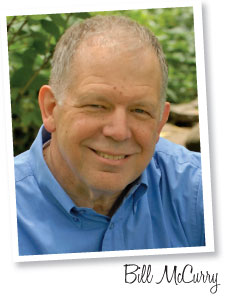2/1/2018
The Right Decision
Bill McCurry

“I can’t fire him! I’ll never find someone with his skill set.” I was losing an argument with a mentor. He’d observed the lack of certain interpersonal skills in one of my “key” employees. He saw the strain on other employees and asked when I was going to take the action needed, yet I struggled.
“When you tell me how difficult it is, you haven’t decided on the desired end result, which guarantees you’ll make the wrong decision. If you worry about implementation problems before you have a clear end result in mind, you’ll always make an incorrect decision. Every tough decision has implementation complexities to work out. Only after you’ve committed to seeking the needed result will you objectively determine how to overcome the hurdles in your path. You need the courage to focus first on the correct decision. Only then should you start evaluating the process of how to get there.”
My mentor continued, “Can we agree you’ve tried everything and this employee isn’t a good fit, with zero evidence he’ll change?” Of course. “So, what’s your correct decision?”
He made me say aloud, “We must upgrade the skills in that position.” It was important I verbalize the desired outcome, focusing on gaining better all-around skills in that position instead of just firing someone.
He continued. “What would you do if this individual were hit by a bus?” We talked through recruitment methods, deciding on a multi-part plan. The action steps seemed simpler when we focused on future goals. My focusing on “How?” before “What?” had made the process seem insurmountable.
A secondary part of good decisions is focusing on how they’ll fit your overall business strategy. I’m embarrassed about the effort I put into propping up a losing location established 30 years before. The neighborhood was declining. In a nearby store, 41 hostages were taken and six killed in a robbery. Still, I wanted to prove we could revitalize that location. All we needed was a 30% sales increase to break even. We assigned some of our best people there. We arrested the decline, but couldn’t raise sales. The more money we lost, the harder I tried.
I’ve had fantastic mentors to whom I would send the company sales reports. When Jim called, setting a date for coffee, I knew it wasn’t social. He was one of the best business minds I’ve ever known. He opened his briefcase and said, “I can’t understand your sales reports. In one store you’re losing your ass(ets).” I started describing everything we were doing to turn it around. He stopped me, “Right. Tell me about this store” and pointed to our biggest producer.
“That’s our top location. It’s fantastic!”
“So, you’re putting some of your best people/efforts into propping up the loser, where ‘success’ means you’ll break even. Put equal effort into your best store and get just a 5% sales gain, which would be more than the entire production of your loser. That 5% gain would raise your total company profits by 10%. Have you considered feeding your winners and starving your losers?”
Americans tend to focus on helping the underdog. That’s admirable public policy, but a bad business resource allocation process. McCurry’s shifted emphasis to provide more resources for our three top locations. The losing store lived out its lease and faded into memory. As a company, we lived happily ever after. Maybe it’s coincidence, but that was the most profitable year-to-date in our history.
With every decision you make, consider if it’s the correct decision to get your organization where it needs to go. Forget emotional ties. Disregard the difficulty. Focus on the necessary result. GP
Bill would love to hear from you with questions, comments or ideas for future columns. Please contact him at wmccurry@mccurryassoc.com or (609) 688-1169.